

A Fresh Look at the Catrike Dumont!
Published on 01/29/2024
Welcome back to another Utah Trikes article. Today we are going to take a fresh look at the Catrike Dumont. The Dumont is the most comfortable and smooth ride that you can get from Catrike. With built in suspension, its road riding capabilities are as good as you can get here. And its folding frame makes it quick and easy to take it anywhere you go. Built for paved paths and light trails this little trike is perfect for the urban rider. If this sounds like a trike for you, stick around as we take an in depth look at the Catrike Dumont.
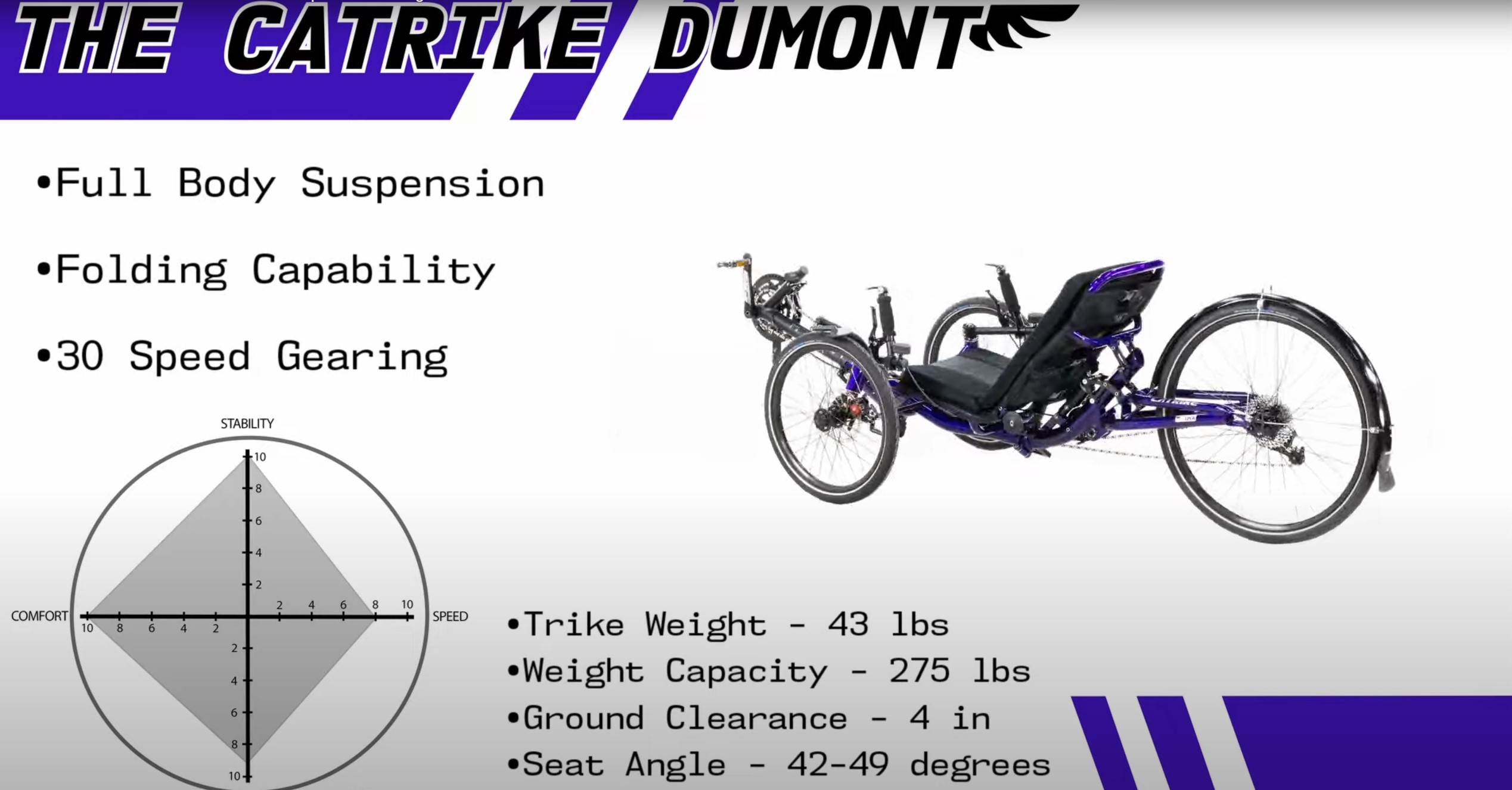
While the now discontinued Road was the first Catrike to get rear suspension, the Dumont was the first Catrike introduced with front and rear suspension. Introduced in 2015 and then shipping spring of 2016, the Dumont was the first American-made production model of a folding full suspension recumbent trike. And so far, it still is. In addition to front suspension, the Dumont also features the larger 26in rear wheel and folding features of the Catrike 559, which was introduced the year before. In 2020, Catrike discontinued their Road AR making the Dumont Catrike's only suspension trike.
While the suspension features are the main attraction of the Dumont, let's take a look at Catrike's folding mechanism and how easy it is to use.
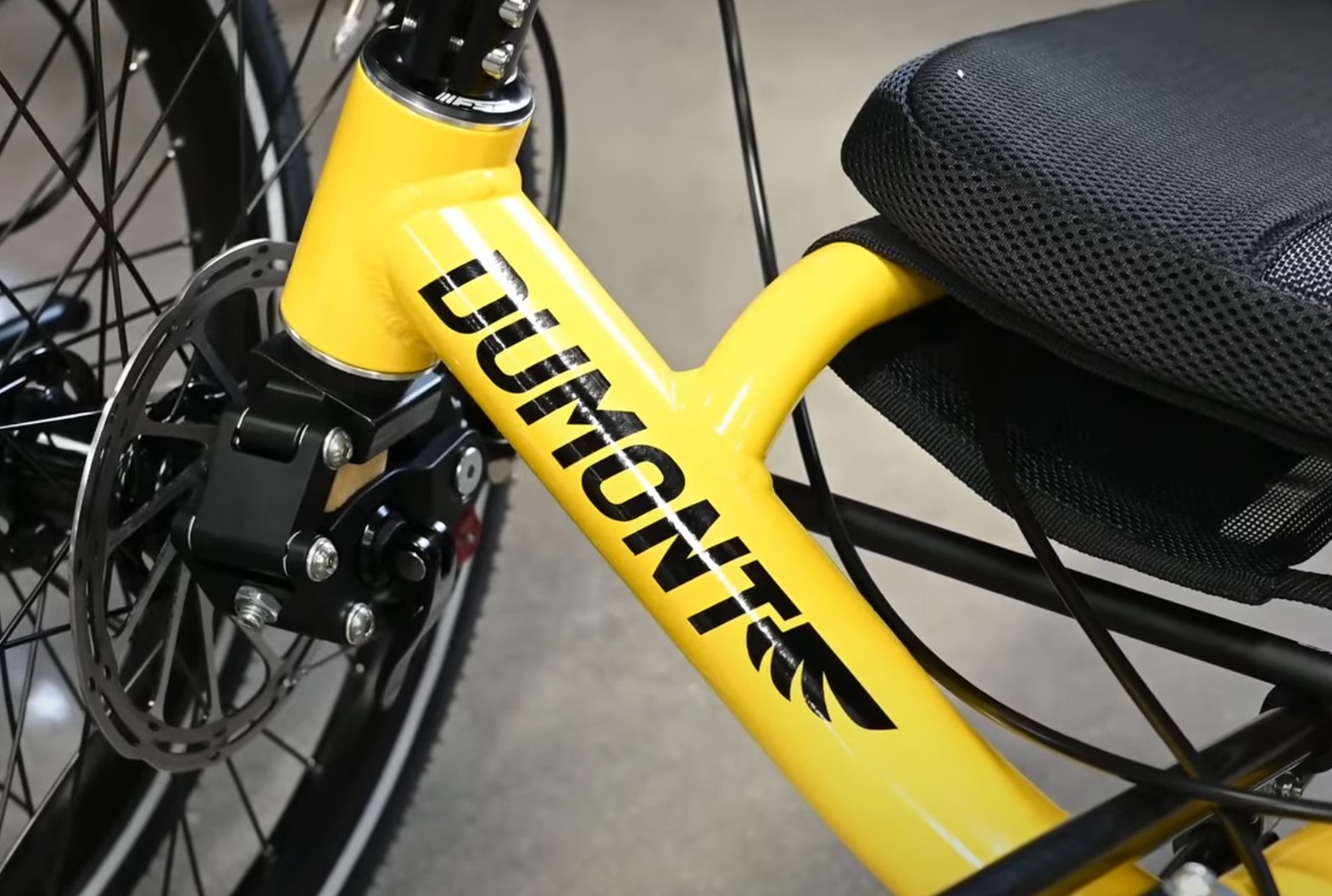
It all starts with this angled hinge on the bottom of the Dumont's frame which allows the rear wheel to fold flat and tuck between the two front wheels in the folded position. Chris is going to show it in action.
First, what you’re gonna want to do is fold the seat down. You’ll open the quick release and unscrew the skewer. Then the seat will be able to fold down. On the bottom side of the seat you’ll grab the velcro strap, you can use it to secure the back of your seat to the seat frame.
For the next step you’ll open up the hinge. We’ll pop out the quick release skewer and unscrew that. Now, you don’t want to take it out all the way, you just want to be sure that the hinge clears the skewer. Catrike recommends that you stand on the left side of the trike to fold it. We’ll fold the back end down making sure that the chain gets caught on the kickstand.
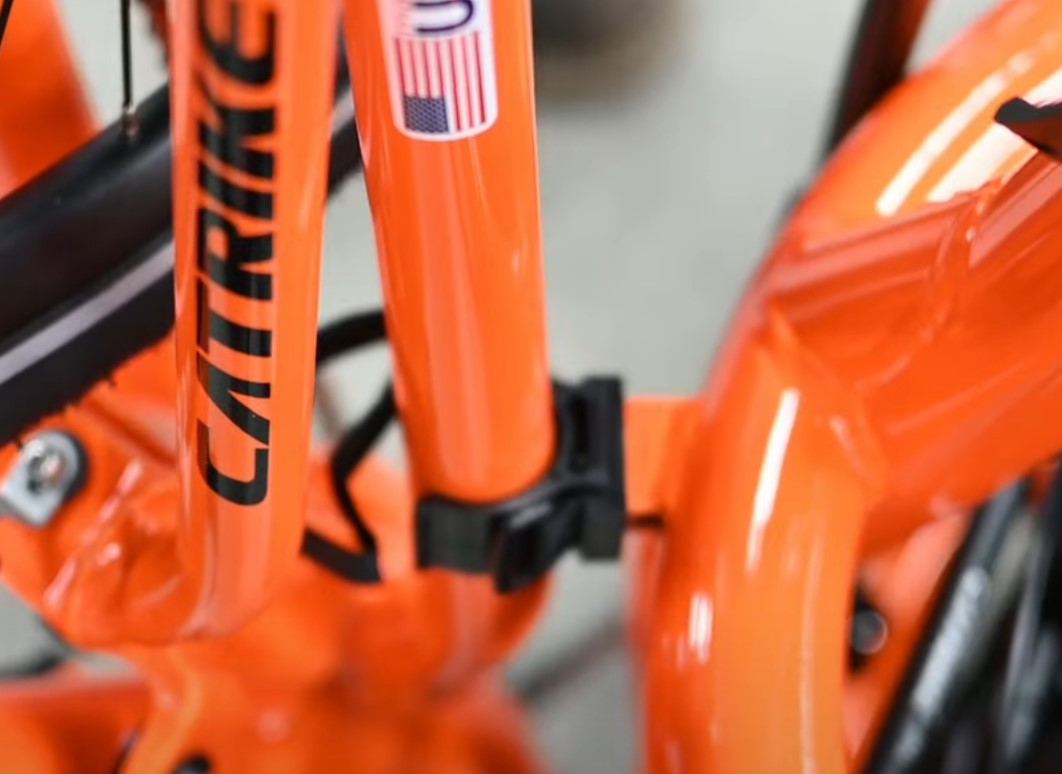
Next we’ll grab the rear swing arm and the front of the trike. Fold it. Then we’ll make sure that the swing arm is secured all the way in the clip. You can then go ahead and stand it up and secure the velcro to keep the swing arm intact
You'll see that once the trike is folded, the seat and rear frame are both held securely in place.
The Dumont features a kickstand which keeps the chain straight and also allows the trike to sit upright on these two wheels. These wheels are placed so that by tipping the trike back you can roll the folded trike. Which is great for bringing it through the airport or from your car to the sidewalk.
The folded trike measures about 32 x 25 x 45 so it will fit in the back of pretty much any SUV, Crossover, and some cars. The Dumont weighs just 43lbs so it can be loaded easily.
Now let's get into the main reason that you'll want to take the Catrike Dumont with you everywhere you go -- and that's the smooth ride.
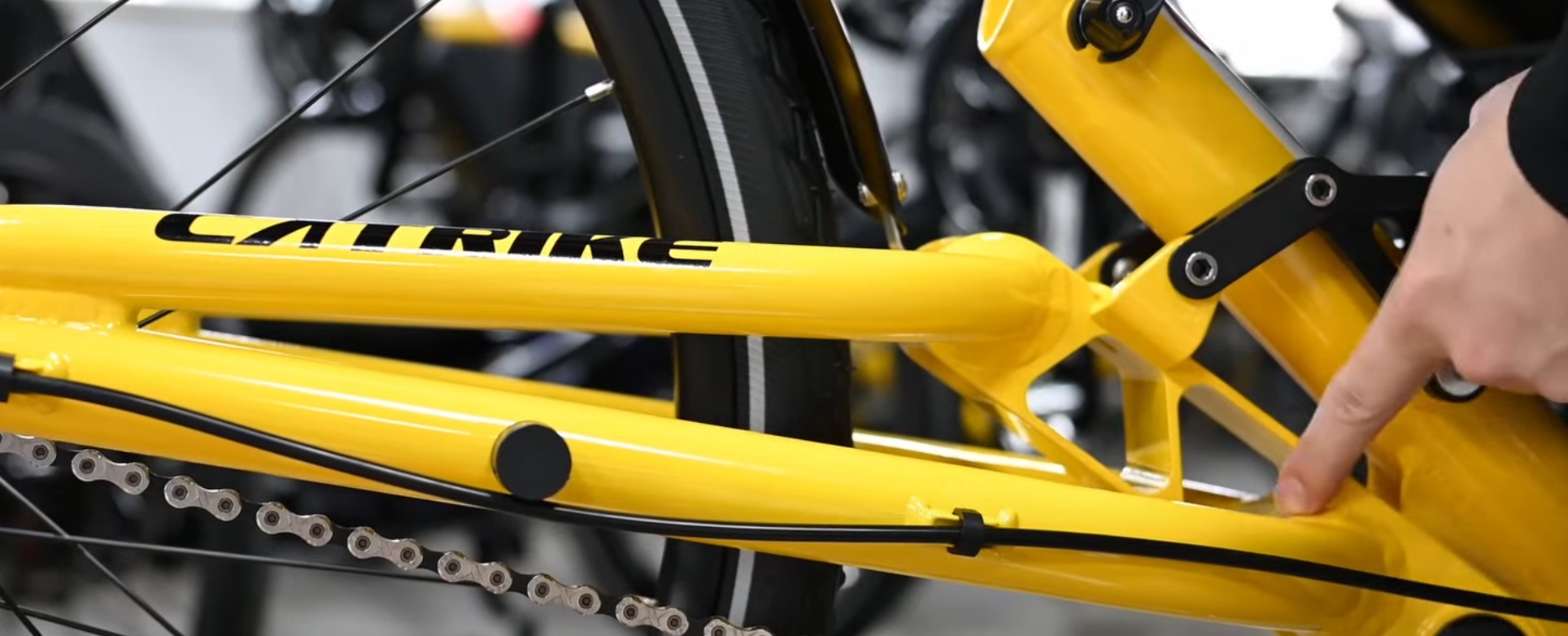
The rear suspension features a CNC'd swingarm with a single front pivot. The swingarm itself is triangulated to maintain stiffness at the rear wheel and as of 2019 comes with Catrike’s thru axle hub system, which has been somewhat controversial because it limits the use of other hubs or motors, or at least it did until we came out with our standard axle adapters.
The suspension linkages here allow for the Shock to lay nicely along the main frame tube and directs the shock's force to a nearly perpendicular angle to the rear chain.
This shock linkage design reduces squat to a minimum which you can see when Chris pedals and the rear end does not squat. This is important because a squatting rear end can “pogo” and will absorb some of your power as you pedal. With the Rockshox Monarch Air Shock that comes stock with the Dumont the ride can be adjusted specifically for the rider weight and comfort.
How we adjust the shock and why
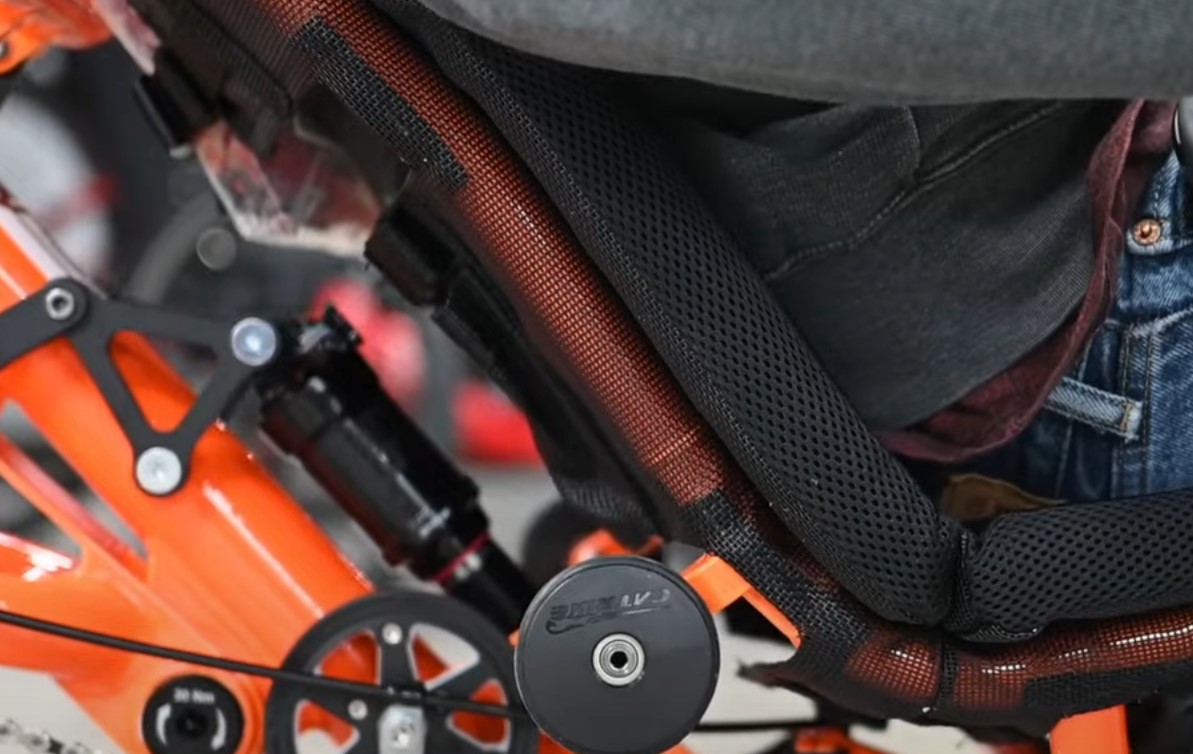
To get the best ride on your Dumont or any other trike that uses adjustable air shock in the rear suspension, you'll want to make sure that it is adjusted properly for the rider's weight.
We'll start by pushing the rubber band or O-ring all the way so it's flush with the sill between the two air chambers.
Next, you'll want to sit on the trike preferably with all your riding gear on so the weight is accurate. This will cause the rear suspension to squat. The O-ring will move. You'll want to stand up trying not to compress the shock anymore as you dismount the trike. Now we can check how far the band has moved down the bottom air chamber.
There are lines on the side indicating 20 to 40 percent movement. The desired spec is 25 for the best performance of this shock, but anywhere in that 20 to 40 range is acceptable depending if you want a softer or a harder ride. The higher the number, the softer the ride will be.
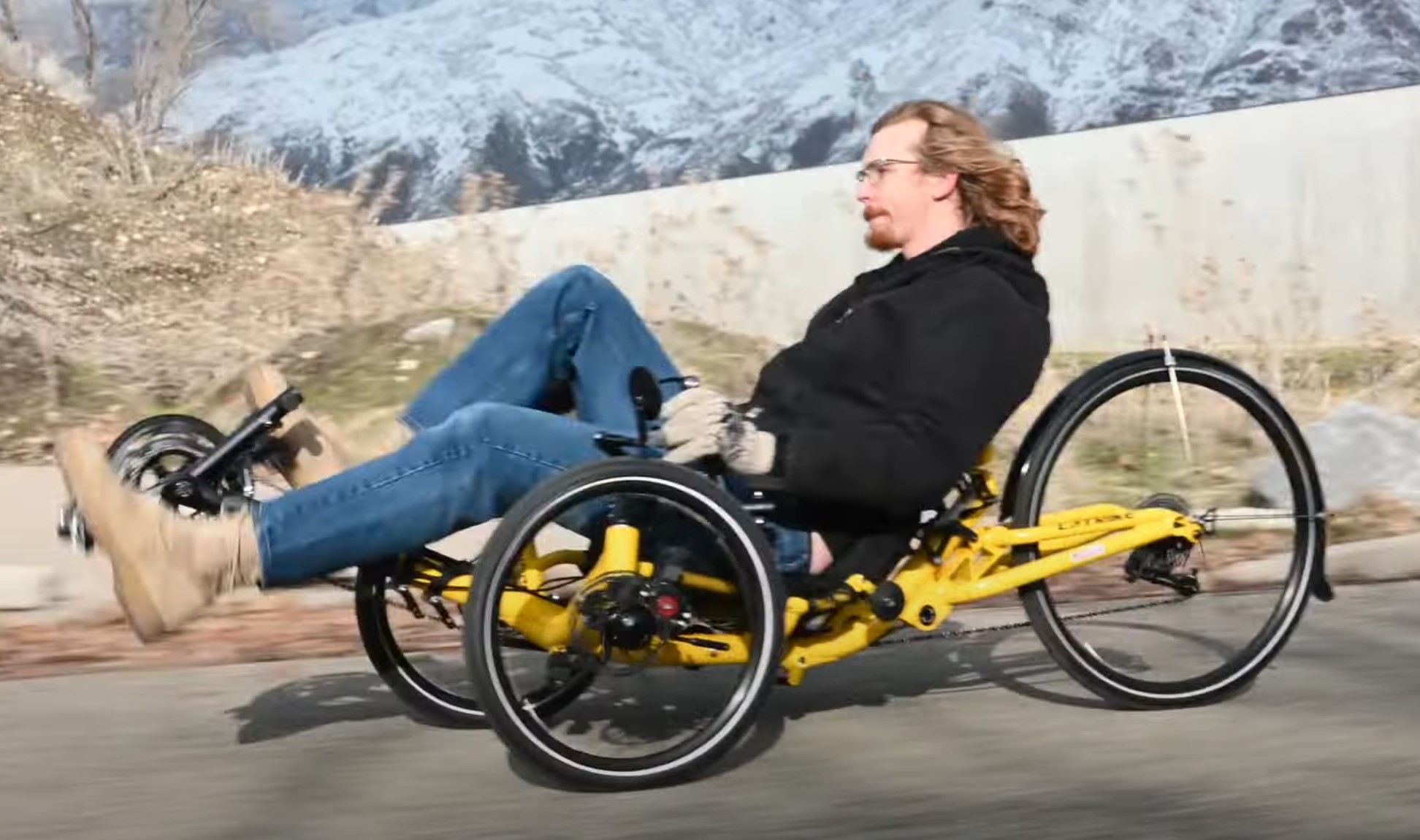
There is a valve on the top of the shock next to the rebound dial. Once you locate the valve, unscrew the cap. You will need to use a shock pump for this as a regular bike pump won't be able to get high enough pressure inside. Shock pumps are also designed so that they will not leak pressure as you unscrew.
With your shock pump attached, you'll want to inflate or deflate in 10 psi increments. Adding air will give you a harder ride and removing air will make the ride softer. Make sure you reset the rubber band and sit back down on the trike between inflating or deflating. Once you have reached the 25% mark, take note of the PSI for reference and make sure you put the valve cap back on.
Now let's talk about the rebound adjustment. The rebound dial will change the speed in which the shock decompresses. There is a pictogram of a rabbit and a turtle with directional arrows on the face of the dial. The dial also has 11 positions. Start with the dial at position 5 and test on some bumps. If it's too springy, turn the dial a click or two towards the turtle and if the shock doesn't feel like it's responding fast enough on bumps, you'll want to turn it towards the rabbit. Some people prefer different rebound settings, so go ahead and find the one that feels right for the riding you'll be doing.
Total travel of the rear suspension is 2in, which is enough to handle most bumps you'll encounter on the road. The Dumont suspension is designed specifically for road comfort and not off-road riding. Of course, it can handle some trail riding, but if rough off-road riding is your thing you'll want to leave the Dumont in the car. After all, You wouldn't take a Cadillac rock crawling would you?
While the rear suspension is designed to absorb the bigger bumps, The Dumont’s front suspension is designed to reduce road vibration to provide you with the smoothest ride and minimize hand fatigue. And, the elastomer dampening system in Catrike's front suspension does a really good job at reducing road vibration.
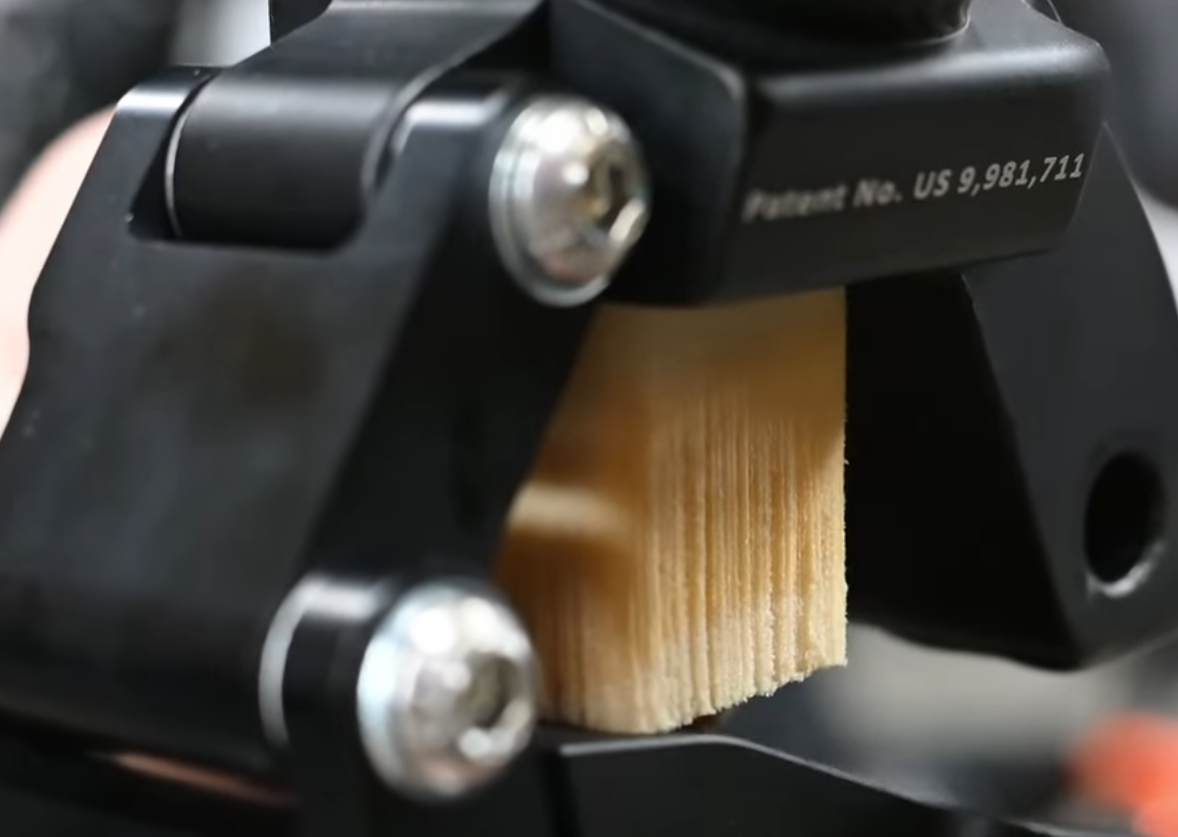
The total suspension travel of Catrike's front suspension is 12mm. Which doesn’t sound like a lot, but the elastomer has excellent rebound characteristics and is all most riders need. Depending on the rider’s weight, different elastomers are available to provide the best ride.
As with all current model Catrikes, the Dumont uses multi-piece 20mm quick release front axles. The axles don't need to be removed typically even when fixing flats, but they do make it nice if you need to package the trike smaller or want to take a wheel to the shop.
The right and left spindles are connected via a single tierod which maintains alignment and due to the corrected offsets of the arms connecting the tierod the Dumont has a good Ackerman approximation which means that in a turn the inside wheel turns sharper than the outside wheel. This is essential to any good steering design as it reduces tire scrub and improves the handling.
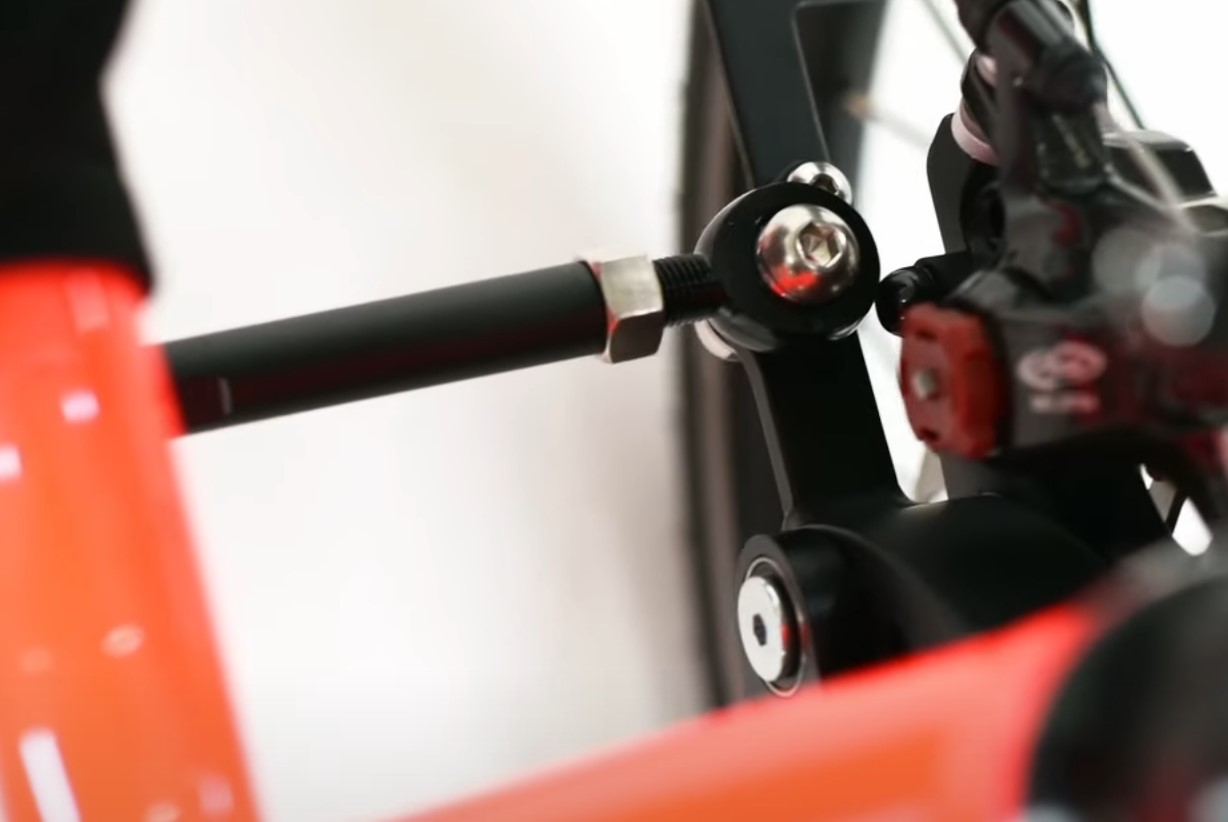
Next to the left tierod attachment you'll notice this bracket here. This is a sensor mount that works with any computer that uses a magnet attached to a spoke to calculate speed.
No doubt about it, the Dumont's suspension will give you a buttery smooth ride, but the comfort doesn't stop there. he seat on this Catrike features a 1 ¾ inch thick pad made from a breathable foam. The comfortable pad is held securely in place by velcro.The back of the mesh features a zippered pouch on the left side and a dedicated pump pocket on the right with a velcro strap to secure it. While the bottom portion of the seat is integrated into the main frame, the rear of the frame can be adjusted for comfort. The stock Catrike adjusters have three positions to set the angle at 42 to 49 degrees.

If you feel like you need to sit more upright, Utah Trikes makes an adjuster which will allow the seat angle to move closer to 90 degrees. Because the seat position is fixed to the trike, adjustments for leg lengths is done via adjusting the boom. The Catrike boom is made of extruded aluminum to minimize flex and features a key way to keep the boom positioned correctly in the clamp mechanism. The angled bar on the front of the boom is the derailleur post and this asymmetrical tubing off to the left is a mount for a headlight.
The boom can be adjusted by loosening the two clamps on the side of the boom clamp and sliding the boom in or out as necessary. If sharing your trike you can note the boom's position by using the index marks on the side. When sharing your trike you will want to pay attention to your chain length and derailleur positions to prevent damage to the rear derailleur.
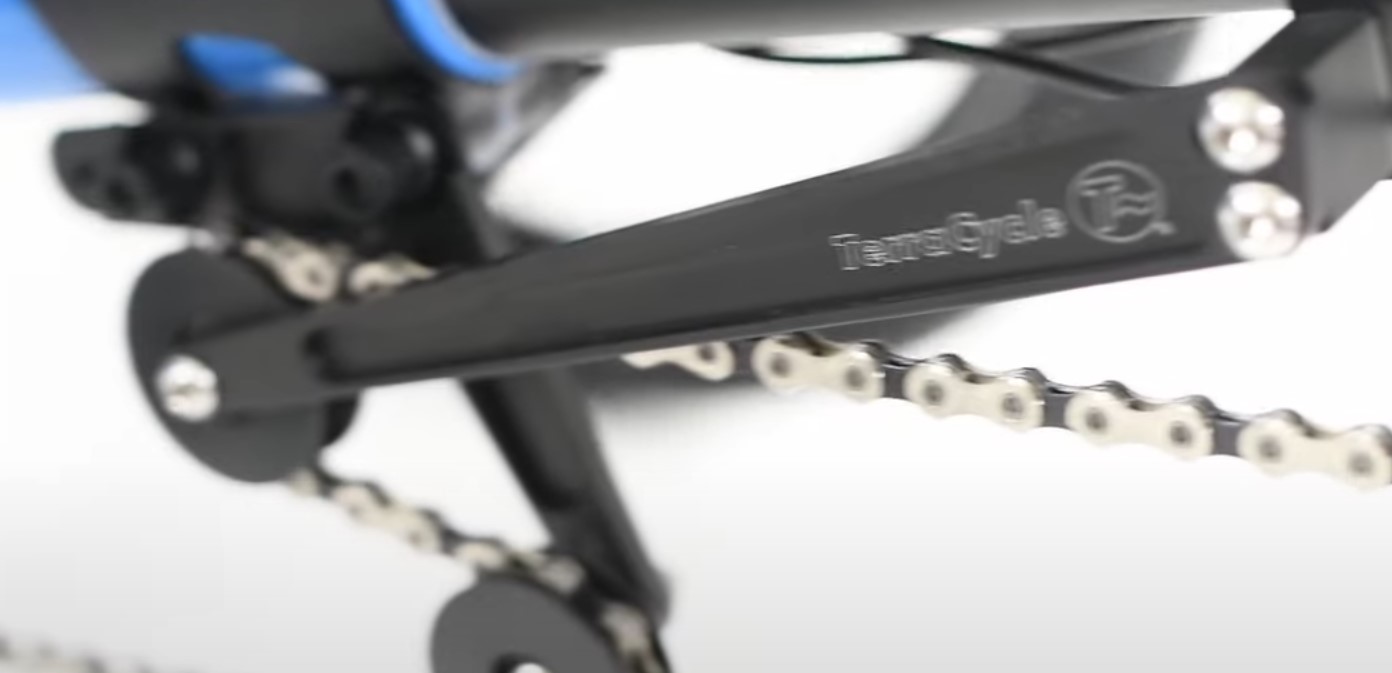
If you'll be sharing your trike a lot you'll want to invest in a chain tensioning system like this one from TerraCycle which allows you to move the boom in or out without adjusting the chain length. The Standard Catrike boom can accommodate riders from approximately 5ft3in to 6ft1in. Taller riders will need the XL boom which is 6in longer. To accommodate riders shorter than 41 inches, the boom will need to be cut. When you order a trike from Utah Trikes we will send you instructions to get the proper sizing information. We'll include a link on how to find your x seam here.
In addition to the seat angle and adjustable boom, the Catrikes also feature adjustable direct steering handlebars. The direct steer two-piece handlebars on the Dumont have three degrees of adjustment with the ability to move them in/out, forward/backwards, and even adjust the angle for maximum comfort. Ideally, your hands will fall naturally to your side and reach the handlebars. It's worth taking the time to get them adjusted for your own perfect fit. It makes long rides that much nicer.
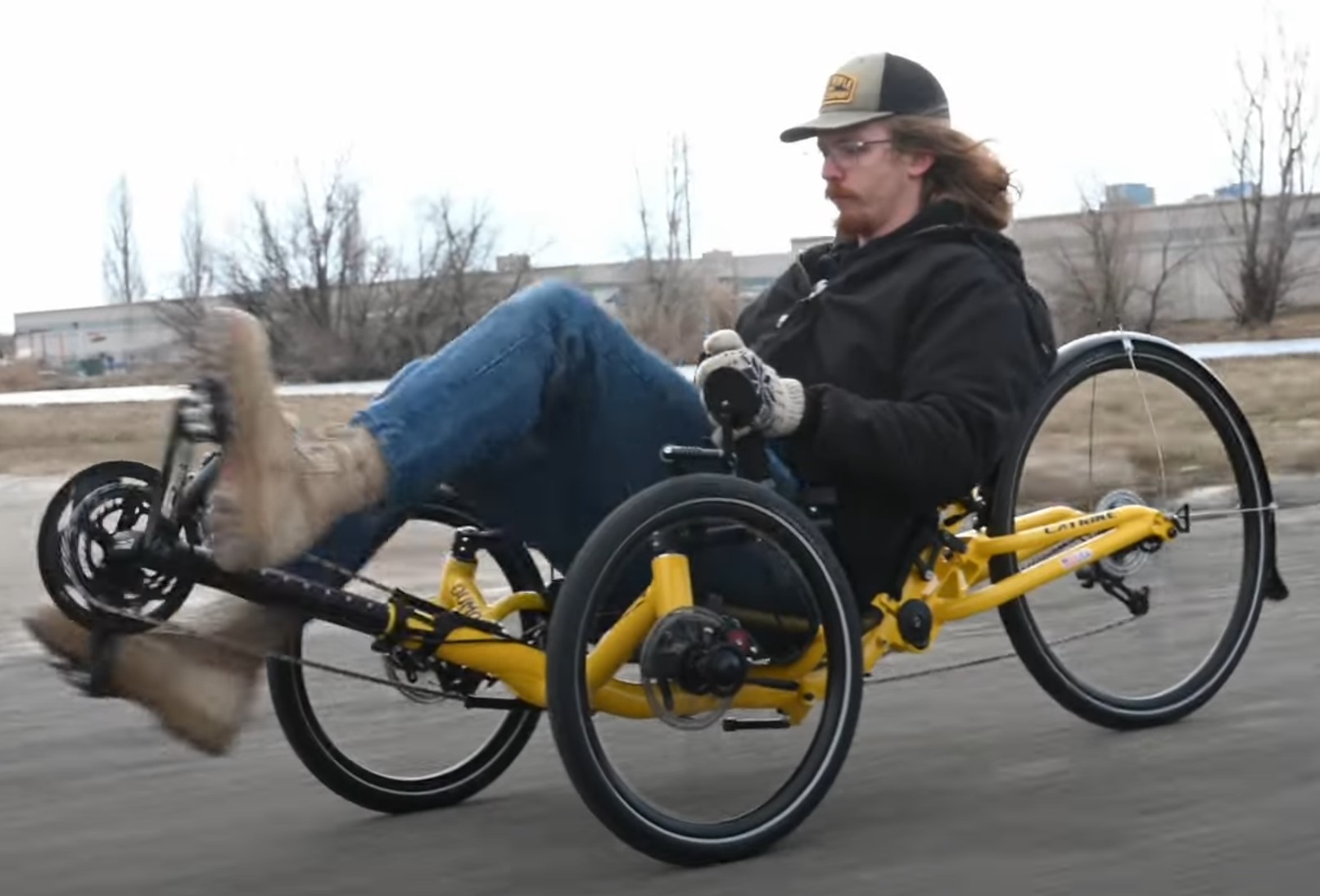
On the top of each handlebar you'll see the SRAM bar end shifters. Typical arrangement has the front shifter on the left and rear shifter on the right. The right shifter is indexed with 10 distinct clicks that correspond with the 10- speed cassette on the rear. Like any derailleur based gearing system you need to be pedaling to shift.
The standard 30-sp gearing will be sufficient for most riders and is enough to climb most hills and you still have high enough gearing to keep pedaling at over 20mph. When you get going that fast you want to know that you can stop fast.
All Catrikes come with the industry standard Avid BB7 160mm disc brakes. The BB7 brakes are easy to adjust at the caliper by using the red dials or by adjusting the cable at the brake levers. The Catrike-branded brake lever features a locking pin to function as a parking brake and, when locked, keeps the trike from rolling. The Catrike-branded brake lever features a locking pin to function as a parking brake and, when locked, keeps the trike from rolling. until the latest version of the Catrike 700 no Catrike has had a rear brake.

For most riders a rear brake isn't going to be needed or wanted, but if you do feel that you need one our thru axle adapters do have a rear brake caliper mount on them.
Riding the Catrike Dumont is an absolute blast but if you're riding in the road you want to make sure that you are safe. Catrike includes some key safety features that will help you see and be seen. Every Catrike includes a mirror and mirror mount for the left side. an optional right side mount and mirror are also available. While we think that lights are the best way to be seen by other vehicles on the road, every Catrike comes with a flag and flag mount that you can use to increase visibility. A good headlight and taillight are good for day and night, but the reflective strips on the Schwalbe tires really allow the trike to be seen by oncoming cars
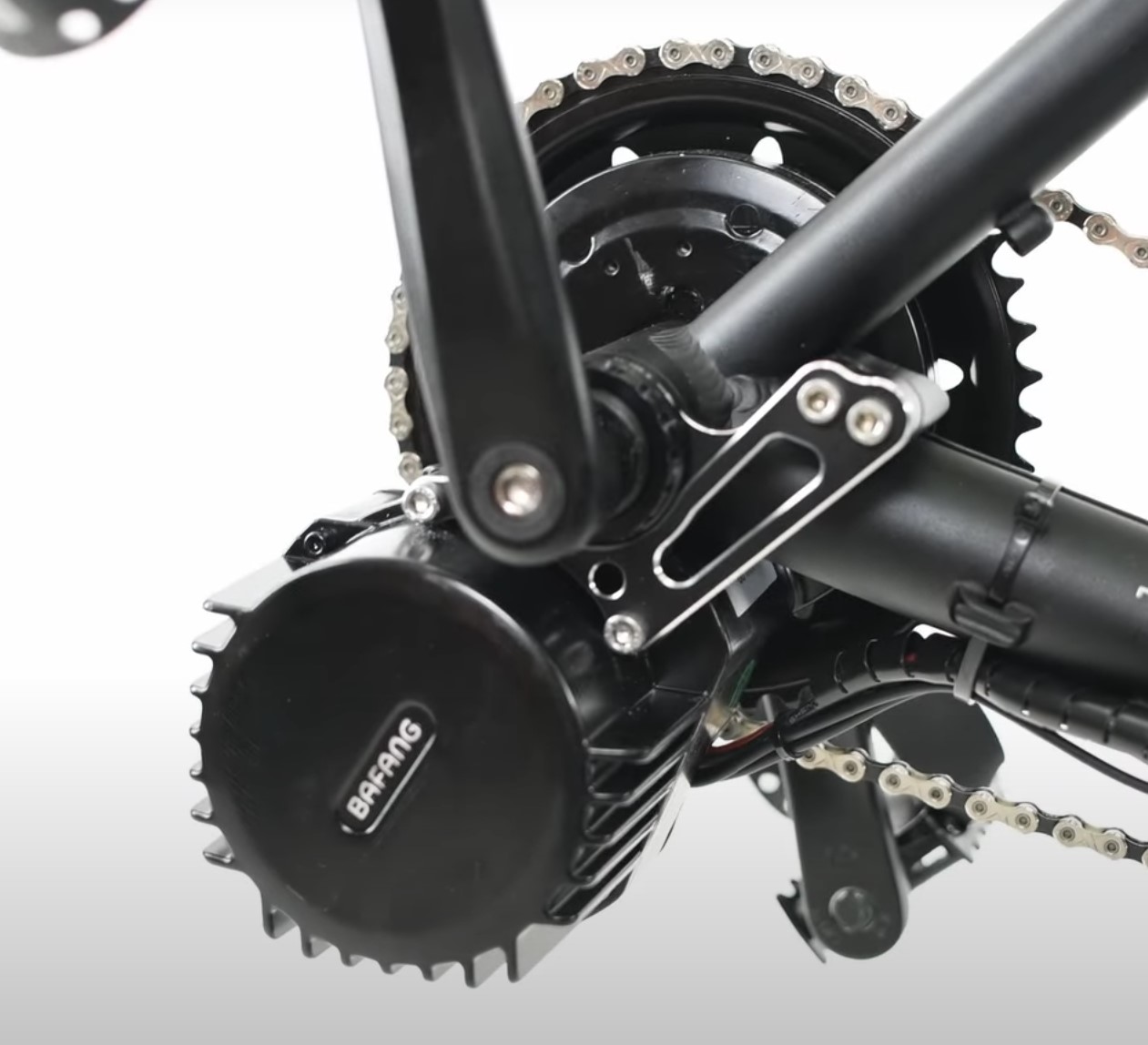
There are really a never ending amount of upgrades and options you can choose to make the Dumont your own. Catrike offers 8 fantastic powder coat colors from the factory, but if you really want to go custom you can start with any of our 40+ colors from the UTCustom Color Shop. Other popular options not yet mentioned include larger wheels, Front fenders, headrest, cargo racks, and wide range gear options from Schlumpf, Pinion, and Rohloff. As with all the trikes we offer, Utah Trikes can motorize your Dumont with various options that can be paired to your gearing needs.
If you're interested in the Catrike Dumont you can visit our shop in Springville Utah or check out our website at Utahtrikes.com. We ship and deliver trikes nationwide and have more available options than anyone else.
We hope you enjoyed this article. Be sure to let us know in the comments below if you have a Catrike Dumont and what you love about it. We'll see you next time remember to relax, spin fast, and ride trikes.




